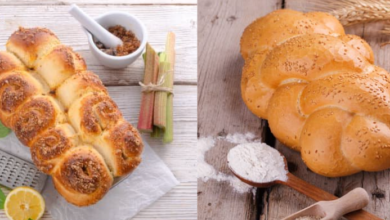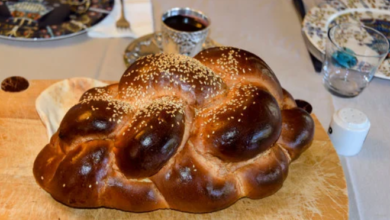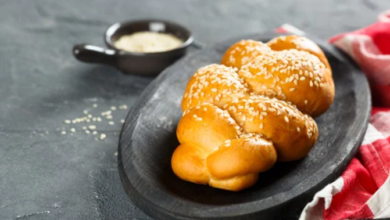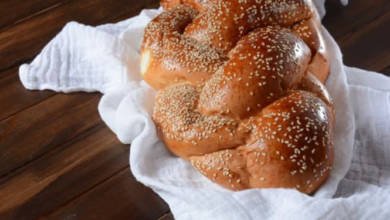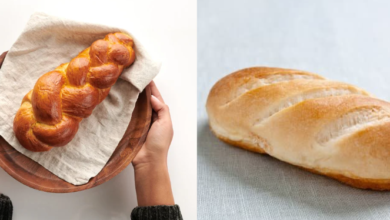Challah: Is It Possible to Make Without Yeast?
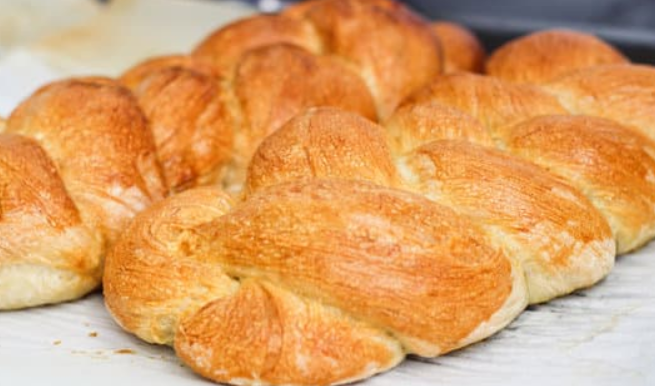
What To Know
- Yeast is a microorganism that consumes sugars in flour and releases carbon dioxide gas, causing the dough to rise.
- Crumble unleavened challah into breadcrumbs to use as a coating for fried foods or as a topping for casseroles.
- Unleavened challah is naturally low in FODMAPs, making it a suitable bread choice for those with irritable bowel syndrome (IBS).
Challah, the traditional Jewish braided bread, is renowned for its golden crust, soft and fluffy interior, and symbolic significance. Typically, it’s made with yeast, a rising agent that gives the bread its characteristic lightness. However, for those with yeast sensitivities or those seeking a unique baking experience, the question arises: can you make challah bread without yeast?
Unleavened Challah: A Historical Perspective
In ancient times, before the discovery of yeast, unleavened bread was the norm. This type of bread, made without any rising agents, was a staple food in many cultures. While unleavened challah may not have the same fluffy texture as its yeasted counterpart, it holds historical and cultural significance.
The Rise of Leavened Challah
Over time, the use of yeast in bread making became widespread. Yeast is a microorganism that consumes sugars in flour and releases carbon dioxide gas, causing the dough to rise. This discovery transformed the art of bread making, resulting in lighter, airier breads like challah.
Modern Baking Techniques for Unleavened Challah
Today, with the availability of various leavening agents, it’s possible to create unleavened challah bread that mimics the texture and flavor of its yeasted counterpart. Let’s explore some modern baking techniques for achieving this:
Baking Powder and Baking Soda
Baking powder and baking soda are chemical leavening agents that work together to create carbon dioxide gas. When combined with an acidic ingredient, such as buttermilk or lemon juice, they release gas and cause the dough to rise.
Eggs
Eggs, particularly egg whites, can also act as a leavening agent. When beaten, egg whites trap air and expand, creating a light and airy texture.
Steam
Steam can be used to create a springy texture in bread. By injecting steam into the oven during baking, it helps the dough rise and prevents it from drying out.
Recipe for Unleavened Challah Bread
Ingredients:
- 3 cups all-purpose flour, plus more for dusting
- 1 teaspoon salt
- 1 teaspoon baking powder
- 1/2 teaspoon baking soda
- 1 cup buttermilk or yogurt
- 2 large eggs, separated
- 1 tablespoon honey
- 1 egg yolk mixed with 1 tablespoon water, for egg wash
Instructions:
1. Preheat oven to 375°F (190°C). Line a baking sheet with parchment paper.
2. In a large bowl, whisk together the flour, salt, baking powder, and baking soda.
3. In a separate bowl, whisk together the buttermilk, egg yolks, and honey.
4. Add the wet ingredients to the dry ingredients and stir until just combined. Do not overmix.
5. Turn the dough out onto a lightly floured surface and knead for 5-7 minutes until smooth and elastic.
6. Divide the dough into 3 equal pieces. Roll each piece into a long rope and braid them together.
7. Place the challah on the prepared baking sheet and brush with the egg wash.
8. Bake for 25-30 minutes, or until golden brown and cooked through.
Unleavened Challah: A Versatile Delicacy
Unleavened challah bread is a versatile food that can be enjoyed in various ways:
- Sliced and Buttered: Spread with your favorite butter or jam for a classic breakfast or snack.
- French Toast: Create a decadent French toast batter using unleavened challah slices for a fluffy and flavorful dish.
- Breadcrumbs: Crumble unleavened challah into breadcrumbs to use as a coating for fried foods or as a topping for casseroles.
Unleavened Challah vs. Yeasted Challah
While both unleavened and yeasted challah bread share similarities in appearance and taste, there are some key differences:
- Texture: Unleavened challah has a denser and chewier texture compared to yeasted challah.
- Flavor: Unleavened challah tends to have a more pronounced wheat flavor due to the absence of yeast.
- Rising Time: Unleavened challah does not require any rising time, making it a quicker option to prepare.
Health Benefits of Unleavened Challah
Unleavened challah bread, being made without yeast, may offer certain health benefits:
- Yeast Sensitivity: For individuals with yeast sensitivities, unleavened challah provides an alternative bread option.
- Low FODMAP: Unleavened challah is naturally low in FODMAPs, making it a suitable bread choice for those with irritable bowel syndrome (IBS).
- Whole Grain Options: Unleavened challah can be made with whole wheat flour, providing additional fiber and nutrients.
Top Questions Asked
Q: Is unleavened challah bread as good as yeasted challah?
A: While both have their unique characteristics, unleavened challah offers a different texture and flavor that can be enjoyed in its own right.
Q: Can I use sourdough starter to make unleavened challah?
A: No, sourdough starter contains yeast, which is not used in unleavened challah.
Q: How can I make unleavened challah more flavorful?
A: You can add herbs, spices, or dried fruits to the dough for extra flavor.
Q: Can I freeze unleavened challah?
A: Yes, you can freeze unleavened challah for up to 3 months.
Q: Is unleavened challah a good choice for people with diabetes?
A: Unleavened challah has a lower glycemic index compared to yeasted challah, making it a more suitable option for individuals with diabetes.
